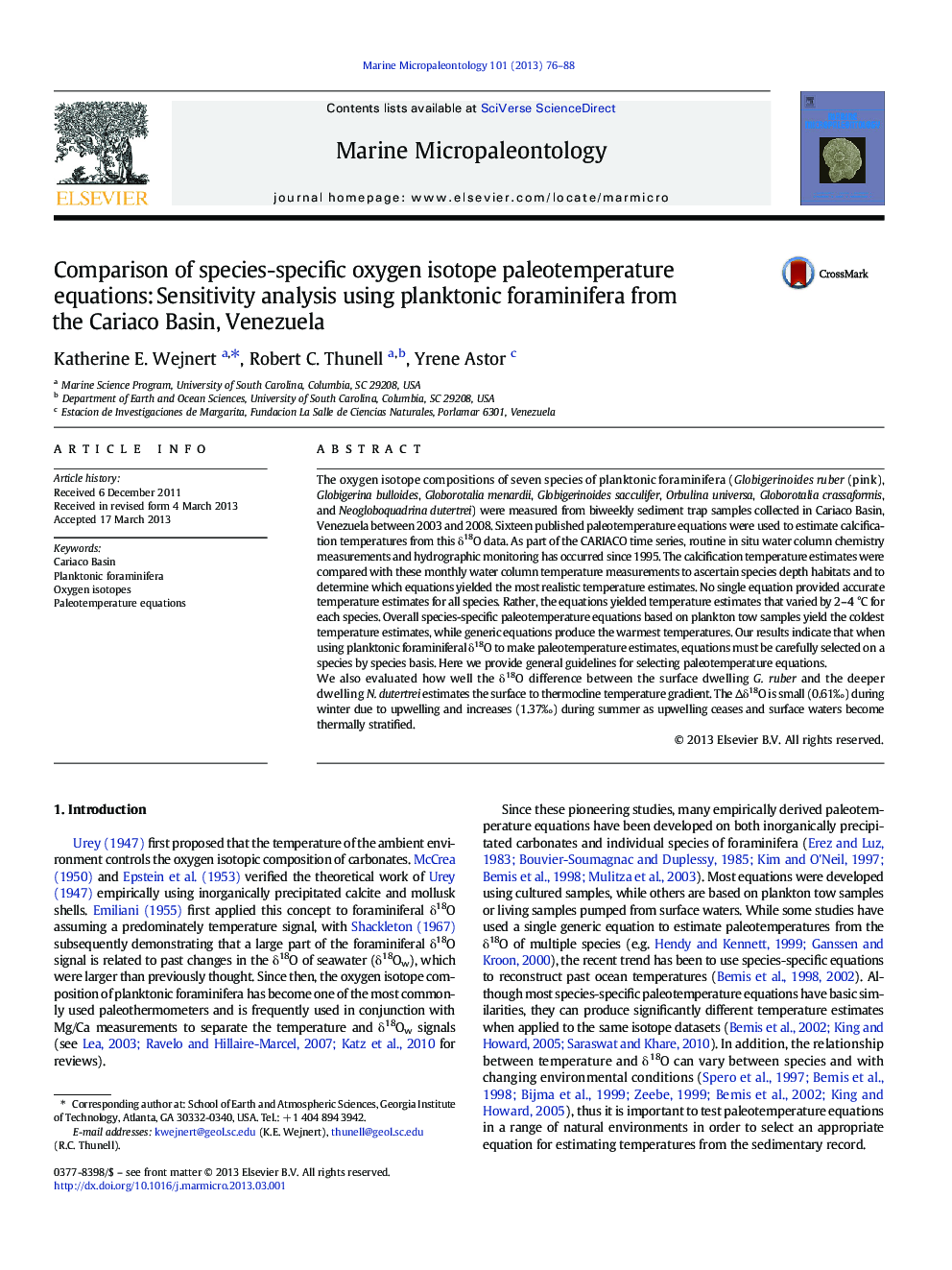| Article ID | Journal | Published Year | Pages | File Type |
|---|---|---|---|---|
| 4748893 | Marine Micropaleontology | 2013 | 13 Pages |
•δ18O was measured in seven species of planktonic foraminifera.•Calcification temperatures were estimated using 16 paleotemperature equations.•The equations yielded temperature estimates that varied by 2–4 °C for each species.•No single equation provided accurate temperature estimates for all seven species.•Paleotemperature equations must be carefully selected on a species by species basis.
The oxygen isotope compositions of seven species of planktonic foraminifera (Globigerinoides ruber (pink), Globigerina bulloides, Globorotalia menardii, Globigerinoides sacculifer, Orbulina universa, Globorotalia crassaformis, and Neogloboquadrina dutertrei) were measured from biweekly sediment trap samples collected in Cariaco Basin, Venezuela between 2003 and 2008. Sixteen published paleotemperature equations were used to estimate calcification temperatures from this δ18O data. As part of the CARIACO time series, routine in situ water column chemistry measurements and hydrographic monitoring has occurred since 1995. The calcification temperature estimates were compared with these monthly water column temperature measurements to ascertain species depth habitats and to determine which equations yielded the most realistic temperature estimates. No single equation provided accurate temperature estimates for all species. Rather, the equations yielded temperature estimates that varied by 2–4 °C for each species. Overall species-specific paleotemperature equations based on plankton tow samples yield the coldest temperature estimates, while generic equations produce the warmest temperatures. Our results indicate that when using planktonic foraminiferal δ18O to make paleotemperature estimates, equations must be carefully selected on a species by species basis. Here we provide general guidelines for selecting paleotemperature equations.We also evaluated how well the δ18O difference between the surface dwelling G. ruber and the deeper dwelling N. dutertrei estimates the surface to thermocline temperature gradient. The Δδ18O is small (0.61‰) during winter due to upwelling and increases (1.37‰) during summer as upwelling ceases and surface waters become thermally stratified.
